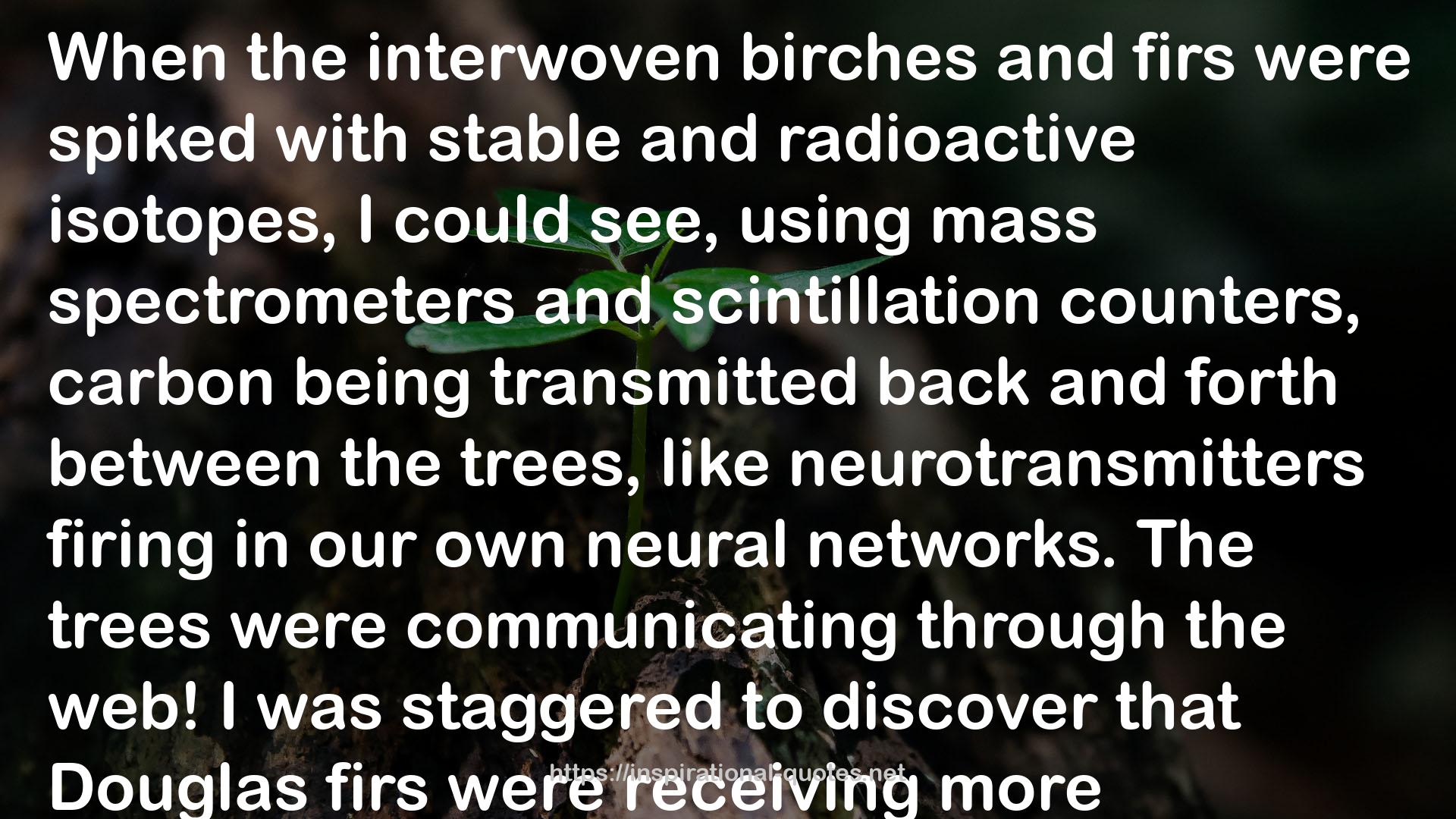" When the interwoven birches and firs were spiked with stable and radioactive isotopes, I could see, using mass spectrometers and scintillation counters, carbon being transmitted back and forth between the trees, like neurotransmitters firing in our own neural networks. The trees were communicating through the web! I was staggered to discover that Douglas firs were receiving more photosynthetic carbon from paper birches than they were transmitting, especially when the firs were in the shade of their leafy neighbors. This helped explain the synergy of the pair’s relationship. The birches, it turns out, were spurring the growth of the firs, like carers in human social networks. Looking further, we discovered that the exchange between the two tree species was dynamic: each took different turns as “mother,” depending on the season. And so, they forged their duality into a oneness, making a forest. This discovery was published by Nature in 1997 and called the “wood wide web. "
― Peter Wohlleben , The Hidden Life of Trees: What They Feel, How They Communicate: Discoveries from a Secret World
